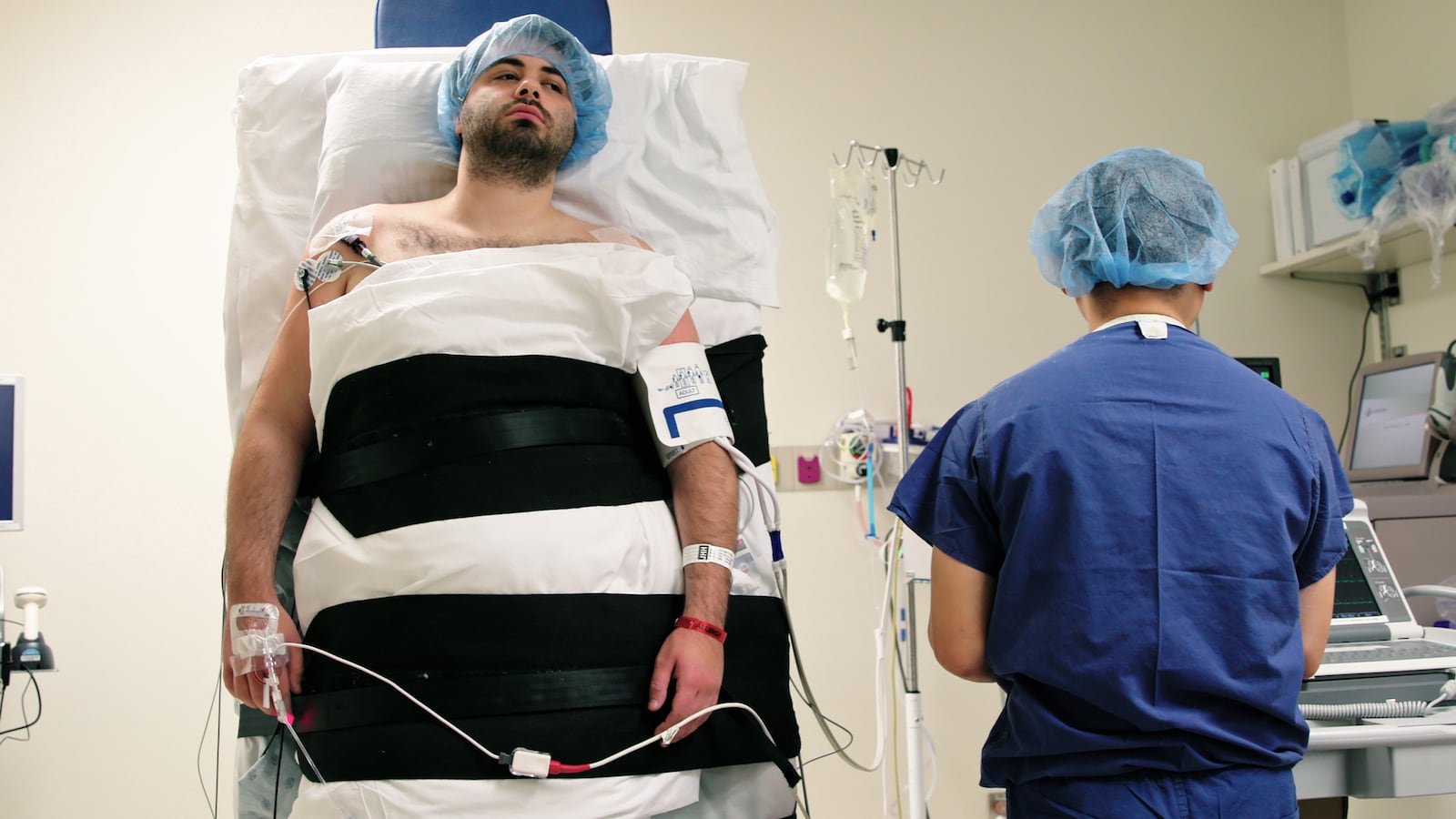“There’s the medicine that you read in books and then there’s the medicine that comes through experience,” explains Dr. Lisa Sanders, a physician at the Yale University School of Medicine, in the third episode of the new Netflix docuseries, Diagnosis. When it comes to cracking the strange, textbook-defying cases explored in each episode of Diagnosis, only the latter will suffice. The patients who consult with Sanders have all seen their fair share of doctors, specialists, and emergency room personnel. Still, they need answers.
Created in association with The New York Times, Diagnosis is predicated on an experiment, inspired by Sanders’ New York Times magazine column of the same name. Since 2002, Sanders has used her column to spotlight patients manifesting unusual symptoms. Last year, realizing that often these cases transcend traditional medicine, Sanders decided to take advantage of the extensive readership of the Times—in short, she wanted to try crowd-sourcing medical advice. Diagnosis, a seven-part documentary, captures the results of this experiment.
Each episode follows roughly the same format. A subject is introduced and briefly explains his or her frustrating medical history and bizarre symptoms. In the first episode, it’s a young woman named Angel Parker who experiences inexplicable severe chronic pain triggered by exercise. “Finding a diagnosis would change my life completely,” says Angel, preparing to undergo a series of metabolic tests, “I don’t think I would ever ask for anything else in the entire world.” Another episode features a 6-year-old girl prone to dangerous seconds-long episodes of paralysis, sometimes hundreds of times a day.
Almost all of the cases have in common countless hospital visits, family strife, extremely risky treatment options (in one case, doctors recommend to parents that their seven-year-old undergo a hemispherectomy, or the surgical removal of half of her brain), and as a result, conditioned distrust towards the medical community.
Sanders consults with the patients and their families, offers her observations based on the information available, and then takes it to “the crowd” by writing a column. Readers can then share their own experiences and weigh in on potential diagnoses. Crucially, the subjects of each episode are not necessarily looking for an immediate fix to their problems. They just want the comfort of a diagnosis, of knowing why their bodies are behaving a certain way. Only then can they begin to seek treatment.
The experiment alone is fascinating fodder for a documentary, but each episode is also layered with moving portraits of families torn by illness, ethical debates over life-altering treatments, and uplifting friendships forged over shared suffering between strangers online. For the mom of the aforementioned child suffering from paralysis, the sense of community is enough: “You do not want the kid that has something that nobody else has.”
One of the most interesting episodes was the one (of the five I have watched) in which Sanders and the crowd were unable to reach a satisfying solution. It showed the limits of the crowd-sourcing experiment and exposed the stigma surrounding seemingly invisible illnesses. Lashay Hamblin was an athletic, bubbly teenager from Utah when she was bitten by a raccoon on a family vacation. Everyone in her family maintains that that’s when her symptoms started, and they cling tight to the belief that she suffered some sort of parasitic infection. In the years that followed, she experienced frequent headaches and light-headedness. Most vexingly, she began to uncontrollably regurgitate anything she ate or drank.
In contrast to the hundreds of supportive responses that flooded the other episodes, many of Sanders’ readers took to their keyboards to express skepticism about Lashay’s illness. There were countless accusations that she was making herself purge, that she was bulimic and her symptoms were all in her head—accusations no doubt exacerbated by the fact that she was a slender, conventionally pretty 16 year old with wavy blonde hair and impeccably applied makeup (“I try to do my makeup every day because when I’m pale, I don’t like when people are like, ‘Oh, you look really sick.’”) Tweets from readers flash onscreen, saying things like, “She’s fake,” “Eating disorder, all mental. You’re welcome,” and “This sounds like an @TheOnion article about bulimia.”
The discouraging responses sadly echoed what Lashay and her family had heard from many other medical professionals in the past. As a result, they were reluctant to accept help or trust different methods of treatment. When Sanders concluded based on the few helpful messages that Lashay likely suffered from rumination syndrome, the repeated involuntary contraction of abdominal muscles that causes one to regurgitate food and drink, the Hamblins refused to accept the diagnosis. Based on the way Lashay and her symptoms had been stigmatized in the past, particularly by one doctor who made her feel blamed for what was happening to her by incorrectly grouping rumination syndrome with eating disorders, they once again felt let down and ultimately did not pursue treatment.
Lashay Hamblin’s story best captures the theme that underlies every episode of Diagnosis, the weight of the diagnosis itself and the way a doctor presents the diagnosis to the patient—an aspect of medical practice often taken for granted. Sanders introduced Lashay’s episode with an anecdote about how when her mother died, her father did not understand what had happened because the doctor who delivered the news could only manage to say, “She’s gone.” “He couldn’t bring himself to say what he really meant,” she said of the doctor. “And it took my father a ridiculously long time to hear what the doctor couldn’t say: that my mother had died.”
It is this memory that reminds Sanders of the important responsibility associated with delivering a diagnosis. Something as simple as semantics is enough to completely shape the way someone perceives their illness and, as in Lashay’s case, can greatly influence their path to getting the help they need.
Produced by Scott Rudin (Lady Bird, No Country for Old Men), Diagnosis is a fascinating attempt at answering the question Lisa Sanders poses in the series trailer: “What if social media could save lives?”






